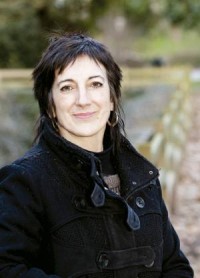Naturkone asks the Provincial Council of Gipuzkoa to take some steps on pine disease
- The collective Naturkon Gipuzkoa presented last Wednesday a letter to the Provincial Council of Gipuzkoa requesting that the fungus that has attacked the pine tree and the decision of the Provincial Council to act against it. In particular, he asked him about the toxicological information he manages, the research he intends to carry out in order to compare the ecological state before and after the treatment, how he intends to reconcile this biocidal treatment with the conservation of mushrooms, especially the conservation of Lobaria virens...

He has also asked him, knowing that copper oxide is highly toxic to fungi and to the rest of the fish and aquatic fauna, to transmit all the information he has in his hands, not only to Naturkoni, but to all the fishing associations, fishing federations and mycological societies of Gipuzkoa.
In the same vein, Naturkone has asked the Representative to transfer this information to all the members of the patrons of the natural parks of Gipuzkoa, who have the management of nature protection in their hands.
Finally, given the seriousness of the problem and, in particular, the greater seriousness of the path chosen to solve it, Naturkone concludes that there is sufficient reason to convene once and for all the Gipuzkoa Biodiversity Council, which has not met since its inception in 2015.
The Member has not answered us anything.
The literal text of the letter is:
Ainhoa Aizpuru Murua Deputy Foral
Arantza Ariztimuño Director
Alfonso Acarreta Technical Secretary
Iñigo Mendiola Head of Service
Economic Promotion, Rural Environment and
Department of Territorial Balance
Provincial Council of Gipuzkoa
Ladies and gentlemen, good morning.
In view of the epidemic that has occurred in recent months in the Basque Country in general and in Gipuzkoa in particular in pines, we wish to make a number of requests:
(a) We would like to receive a copy of the documentation of the dossier of the “Basque Conífero Forest Recovery Strategy”, recently approved and announced at a press conference on 11 October.
(b) We would also like to have all the technical information available on the subject, toxicological with regard to fungi in general, toxicological with regard to the inhabitants of the waters, environmental, phytosanitary, etc., as well as the administrative information concerning the application for authorisation to the Government of Madrid.
(c) We would also like to know whether your department has planned to conduct a previous and subsequent faunistic, floristic and ecological study to assess the environmental effects of treatment, in particular on fungi and aquatic ecosystems, but also on terrestrial macrofauna.
(d) We would also like to know how the Department envisaged this conciliation procedure with the obligation to protect Lobaria virens, one of the least and most threatened lichen in Europe, living in Gipuzkoa.
(e) To have the technical opinion on all the points before the UPV/EHU Department of Ecology.
(f) Given the seriousness of the matter, we believe that this is the right time, and we request it, to address this issue of the convening of the Biodiversity Council established in 2015 (Foral Decree 9/2015 of 14 April), after referring all this information to the members of the Council, given that it is time to incorporate approaches in forestry policy that transcend the interests of the timber sector and to apply more transparent procedures.
(g) Due to the toxicity of copper (I) oxides on fungi, all mycological societies in the Basque Country are requested to provide all the technical information referred to above.
(h) Furthermore, in view of the toxicity of the compound intended to be released in respect of aquatic living creatures, it is requested that the information referred to above be provided to all fisheries associations and fishing federations in the Basque Country.
(i) As the consequences of the announced treatment are expected to be very serious, members of the Natural Parks Board are also requested to transmit such information.
(j) To forward this information to all the members of the Gipuzkoa Territorial Fisheries Council and to add this matter to the agenda of the annual meeting of that Council, as well as a special monographic meeting, for further consideration.
Without another particular one, receive a cordial greeting.
Bedaio is celebrated every year on a Sunday of the days when the few and November love each other. One more year, with a table to offer the manual LandarLantzen 2019, made with the great Olariaga, and to try to clarify the questions and doubts of the people. On the left, Koro... [+]
The landscape of pine has been blackened, especially that of pine insignis (Pinus radiata). It's also known as black pine or rapid pine. Black pine, in fact, has blackened the landscape of the mountains in which it has grown, and its pine forests are black at all times of the... [+]






















